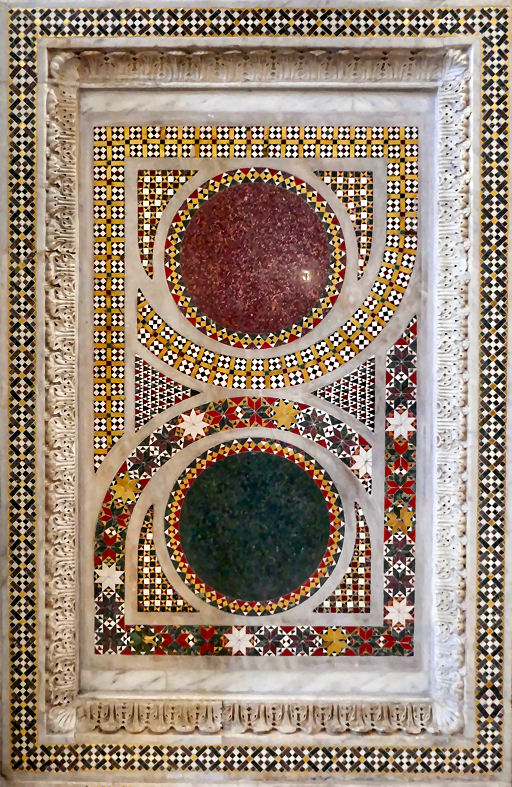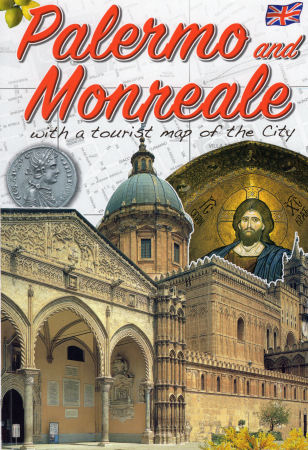|
Saturday 9th
I’d had a serious yen to visit
Sicily since the exhibition at the British Museum in 2016. My interest
being most tweaked by the Normans and the mosaics, a
Travel Editions trip called The Normans
in Sicily seemed advisable. The flight this morning was an Easyjet at
6.45, so I stayed overnight at the Gatwick Hilton which is much more huge
than the Heathrow one that I often stay at for early starts, with the
consequent long queue for check-in, even at half past eight. But it turns
out, as was politely pointed out by the desk clerk, that I could have
skipped the line, thumbed my nose at the proles, and used their priority
desk due to my Hilton Honors card. I look forward to some nose thumbing
next time.
So an early and blurry start this morning. The hotel foyer was an echoing
wasteland, but approaching the terminal things got more bustly. Boarding
had already begun as I got through security, forty-five minutes before
takeoff, which seemed oddly early, but what with the 'overhead bins are
full, please check-in your bags' palaver and the long bus journey I was
only safely seated ten minutes before take off. Ten minutes after we were
due to take off the pilot came on to say that the delay was because we
were waiting for a family held up 'through no fault their own' and a
further fifteen minute wait was expected, and that he appreciated our
understanding. So we all sat waiting in the a state of increasing
understanding, and finally took off an hour and twenty minutes late. (We
later learned that this was actually due to the people concerned having
booked special assistance, but it not having been provided.) I still
managed to breakfast on an in-flight orange juice, coffee and muffin combo
well before 9.00, though, whilst the chap behind me made do with a
breakfast gin and tonic.
Tour lecturer Gerald Deslandes met us at baggage reclaim - he had been on
the flight but oddly Travel Editions had decided that he didn't need to
meet us at the terminal in the London. Tour manager Tullio Scurria met us
in the arrivals lounge and we swiftly coached it into Palermo and the Hotel Mercure Centro. I was a bit disappointed to find that my room was a pokey
single, which rankles even more when you've paid the tour company the
single-person-in-a-double-room supplement. (I complained when I fed back after the trip and
was told that this is an on-going and frequent problem, which didn't
really help me.) After a bit of
settling in and unpacking we made for a mediocre lunch, with poor service
(we were approached by four separate beggars before the waiter) at a local
restaurant, but it was outdoors, sunny and warm, so what the heck! And
then an unscheduled visit to the Archaeological Museum to look at Greek
and Roman statues and the like. Not an area of knowledge for me, but the
place is unarguably full of lovely stuff, some of which came to the
aforementioned BM exhibition.
After a welcome prosecco, or two, with nibbles, we strolled out for dinner
at a nearby restaurant. The veggie starter was some very good spaghetti in
a tomato sauce and the main was a mozzarella and tomato salad, which was a
bit backwards, but Italian in its logic. Desert was a delightfully
lip-puckering lemon sorbet. Equally delightful was the early night, after
an unusually long day.
Sunday 10th
Having failed to notice that my phone had not
adjusted its clock I was shocked when I put on my watch to discover I was
therefore an hour late. So by the time I'd breakfasted Gerald's morning
lecture - The Normans in Sicily: Mosaics from the Martorana to Monreale -
was nearly finished. Following some sarky comments from my fellow
travellers on my waking-up skills,
Laura the local guide lead us to the famous pair of churches built by two
admirals of the Norman kings (see photo top right). The Martorana (Santa Maria dell’Ammiraglio)
(the convent being famous for its marzipan, I find out later!) began the
feast of mosaic walls and ceilings (see right), and equally gorgeous Cosmati pavements
and wall panels (see photo far below). The original Greek cross shaped church has the marvellous
12th-century Byzantine mosaics, the later nave extension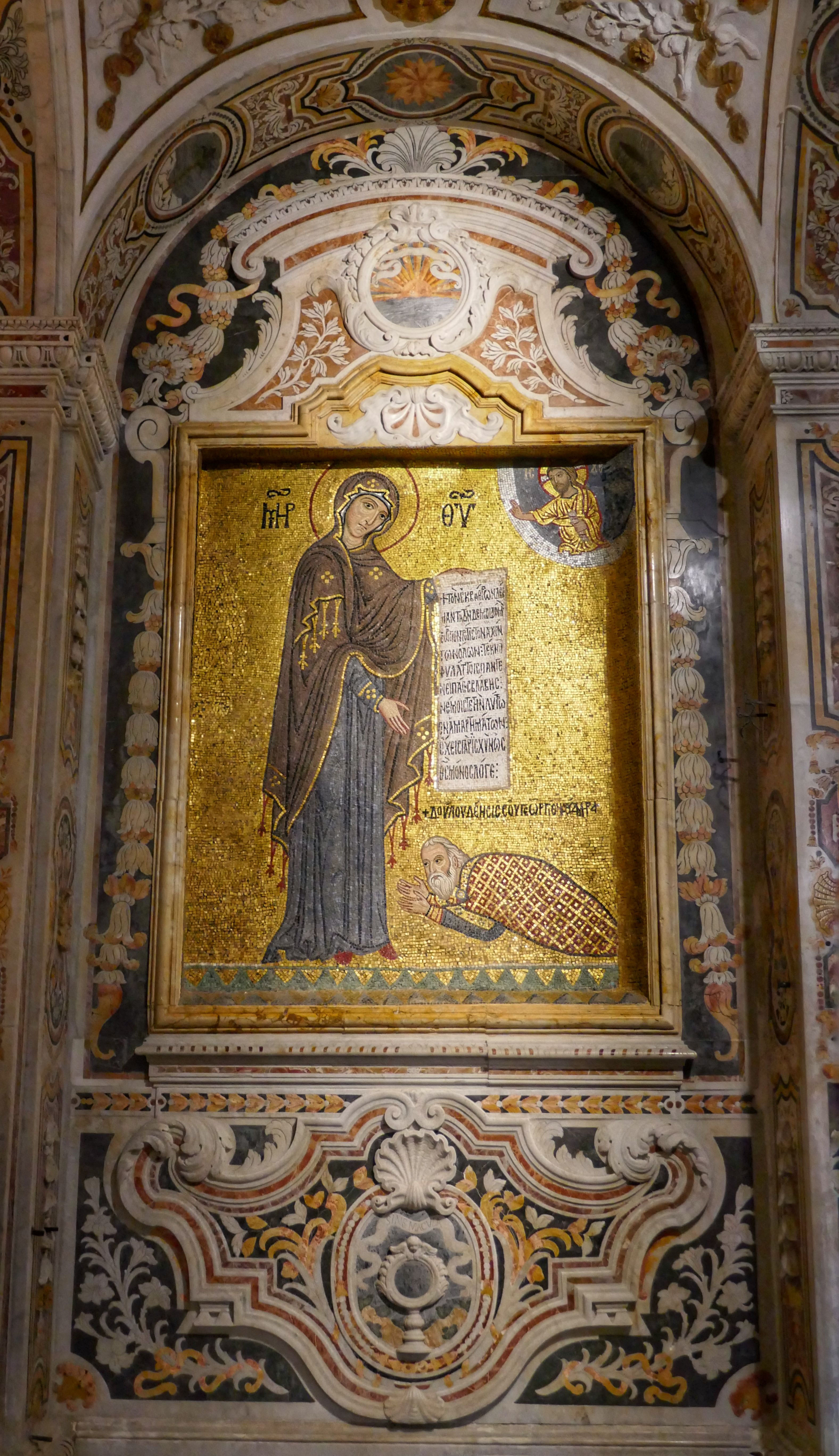 has uninteresting
18th-century frescoed ceilings. This church has the famous mosaic-panel
portraits of its founder George of Antioch (the aforementioned admiral, looking a little like a
tortoise due the loss of the bottom of the mosaic) (see right) and King Roger II. San Cataldo next door is much more austere, with lovely bare walls and domes. has uninteresting
18th-century frescoed ceilings. This church has the famous mosaic-panel
portraits of its founder George of Antioch (the aforementioned admiral, looking a little like a
tortoise due the loss of the bottom of the mosaic) (see right) and King Roger II. San Cataldo next door is much more austere, with lovely bare walls and domes.
On our way to a place where our coach could pick us up (lots of the
centre is pedestrianised now, due to UNESCO regulations - great for
tourists, not so much for the residents) we pass Fontana Pretoria, a too-big and unloveable
mannerist fountain, bought and installed as it's original Tuscan
commissioner Luigi de Toledo (brother of the former Viceroy of Sicily
García de Toledo) needed the money. The piazza is also known as the Piazza
della Vergogna (Piazza of Shame), maybe because of the nude figures, which
would've embarrassed the nearby nuns, or been used as advertising by the
local prostitutes, depending on who you listen to, or because of the shame
of the corrupt government buying it.
Our coach took us to the Palazzo dei Normanni, now the
home of the Sicilian Regional Assembly, so we had to have our bags and
persons scanned in a very airportly way. What's worth being scanned for is
the wonderful Cappella Palatina where more wonderful 12th-century mosaics
and Cosmati floors are topped by an amazing Islamic Muqarnas ceiling (see right).
We were then coached back into the centre to lunch at the same inept and
mediocre restaurant as yesterday for more wrong food and forgotten drinks.
Today's unscheduled trip was to two oratories. But on the way to the coach
Gerald allowed, indeed encouraged, a gelato stop, at which I finally got
to try the famed gelato in a brioche, which I can now heartily recommend.
The two oratories contain the work of famed local baroque stucco-sculpture
guy Giacomo Serpotta. The Oratory of the Rosary in Santa Cita (see
photo below) is his
overpowering masterpiece, truly and interior that makes you say 'blimey!'
The second one The Oratory of the Rosary of San Domenico is much less OTT,
with some soberer figures of the virtues. It also has a nice early Anthony
van Dyck altarpiece of the Madonna of the Rosary with Saints Dominic,
Catherine of Siena, Vincent Ferrer, Olivia, Nympha, Agatha, Christina and
Rosalia. It was commissioned during a time of plague and has a
foreground putto holding his nose over a skull wrapped in a rag.
After an evening lecture by Gerald, introducing the delights of the next
couple of days, we dined at a restaurant of such localness we could've
pottered over in our slippers, if not bathrobes. Everyone else had three
courses of fish, mine were a nice crunchy plate of salad, then pasta with
a tomato and aubergine sauce (flavoured with cinnamon!) followed by some
cold roasted vegetables (including butternut squash) accompanied by roast
potato cubes. Desert was a yummy slice of pistachio semifreddo embedded
with crunchy amaretto biscuit bits.
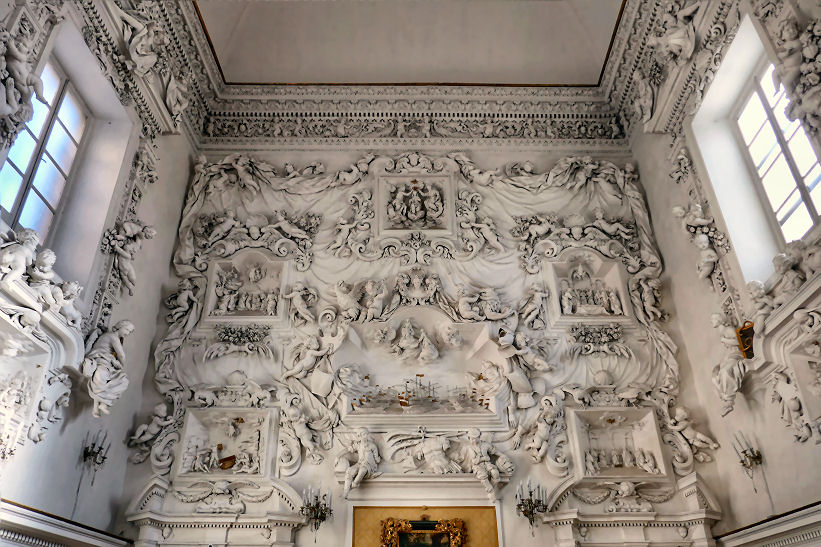
Monday 11th
An early start, with us needing to be on the coach
at 8.00. To Cefalu first, passing rush hour traffic and packs of feral
dogs, before heading along the coast through many mountains. The Cefalu
Duomo has a famous mosaic semi-dome of the Christ Pantocrator, but
is generally a more sober pleasure than the glittering gems of yesterday.
Although it does have some more sparkly Cosmatesque panels. 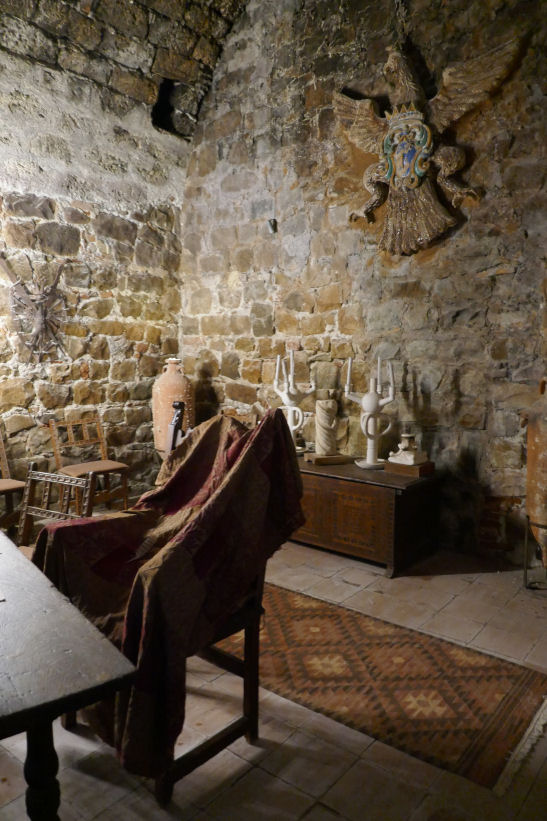
The rest of the day was characterised by long periods of coaching up
seriously windey mountain roads, hooting at corners. Firstly to Caronia,
where local lad Tullio had arranged a special visit to the Norman castle
there which is now a private residence. Lots of bare brick interiors,
including a Romanesque Chapel, and a pretty walled garden with fine views
from said walls, into the garden and out towards the mountainous vistas.
Lunch was at the Agriturismo Margherita, and was solidly OK. My experience
was more than somewhat soured by being given a plate of cheese and meat,
despite having been identified as a veggie, and when I pointed this out
being told to just eat the cheese then, and to ignore the slices of dead
pig. Other courses involved cold ratatouille, cold roasted vegetables, an
over-saltily-dressed green salad, and some perfectly pleasant funghi
pasta. The semifreddo (hazelnut this time) at least ended my meal on a
high. The espressos in disposable plastic cups was another low though.
Then on to the Abbey of San Filippo di Fragalà, famously founded in 1090
by Queen Adelaide, the wife of Roger I. Another pleasantly bricky and
ramshackle experience exploring the monks’ living areas, but the bigged-up
early semi-dome fresco in the chapel of the Pantocrator, of The Virgin
and Saints, was so damaged as to be barely recognisable as such. A
vague mandorla shape and a female face, maybe with a square halo, was all
that could be made out.
The coach drive back was through the gathering dusk and tedious traffic
jams. The big lunch and long day saw a group tendency to resist further
gathering and eating. Myself I went for the battery-recharging,
trip-reporting, case-packing and self-showering option.
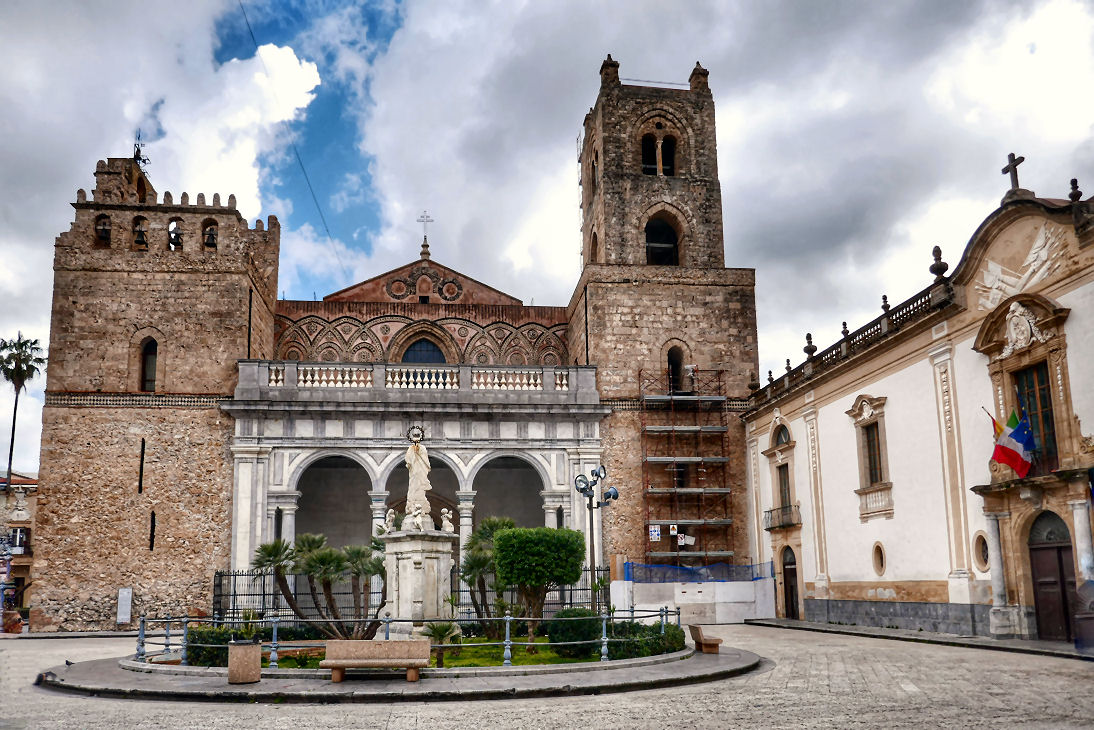
Tuesday 12th
The last breakfast, the checking out, and the
loading of the luggage onto the coach was followed by the short drive to Monreale. The Duomo here
(see above and right), to quote from the trip documents, 'was built by
William II the last of the Norman kings, and blazes with more than 6,500
square metres of spectacular mosaics. Among them is the earliest
commemoration of St Thomas Beckett whose murder was at the behest of
William’s father-in-law Henry II.' It's big, and gives great mosaics and Cosmati-type and Arabic decoration, with more decorated treats in the
Benedictine cloister. You've probably seen photos of the tile-striped
columns (see right for another one).
We then returned to Palermo for a visit to the Palermo Duomo which is
spectacularly Arabic on the outside but baroque-boring inside. During the
independent lunch Gerald took an interested trio for some real baroque
nourishment over in Santa Caterina, a big church opposite the pair of
churches that we visited on our first day. What's the point of baroque if
it doesn't make you go 'wow'? (see photo below)
After some real nourishment we regrouped to coach it to the Galleria
Regionale. The famous Antonella da Messina Virgin, which would have
been my highlight, was sadly away at an exhibition in Milan. Other joys
were the large Triumph of Death fresco and a sweet little Jan
Gosseart triptych. Also lots of medieval panels and altarpieces of very
variable quality, and mostly by anonymous masters, but still fascinating,
mostly, and good to see up close in all their worn and bashed-about age.
The coach got us to Palermo airport in very good time. But the wait flew
by in convivial company, despite the flight being delayed 35 minutes. As
the flight attendants where providing my cheese salad sandwich, Pringles
and orange juice Meal Deal I heard one of them say to the other 'Can you
smell sick?' Which was winningly human, I thought. No more hold-ups, with
my case the very first on the carousel, which doesn't happen often. I
missed the 22.09 train but caught the 22.28, and was home within the
hour. A sleepy Jane and a sleeping Oscar were waiting to welcome me home,
but we were very soon all sleeping.
The Palatine Chapel and the Monreale Duomo are now two of my top Desert
Island interiors, but
I'll confess to not being as smitten by Sicily on this trip as I'd
imagined I'd be. Maybe some settling-in of feelings and expectations is needed, and
follow-up reading. And
there's so much more of the island to see of course. Call me effete but
the piles of rubbish bags, street-corner muck piles, and packs of feral
dogs just plain put me off. Maybe I need to catch up on my sleep too.
|
|
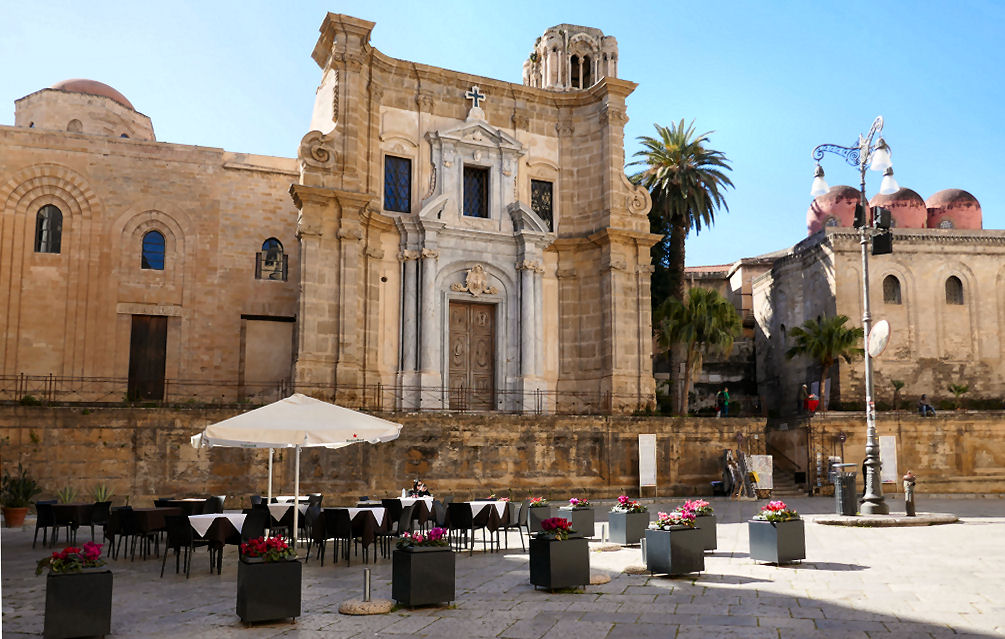
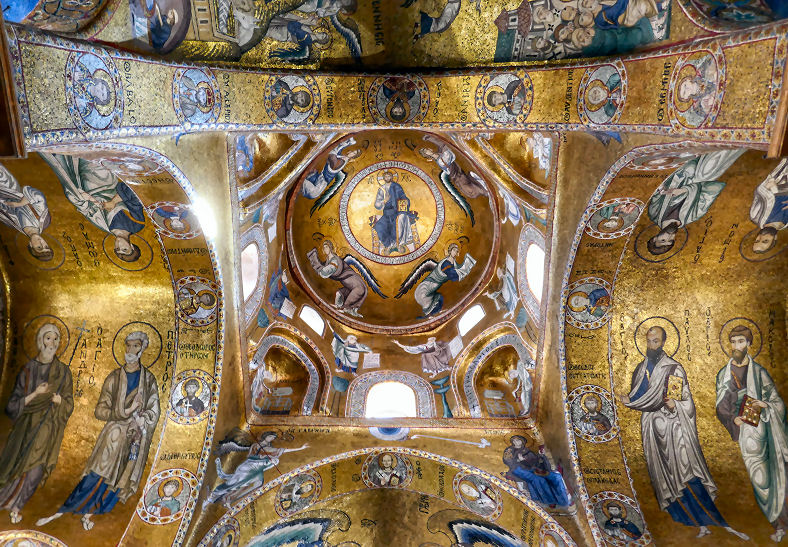
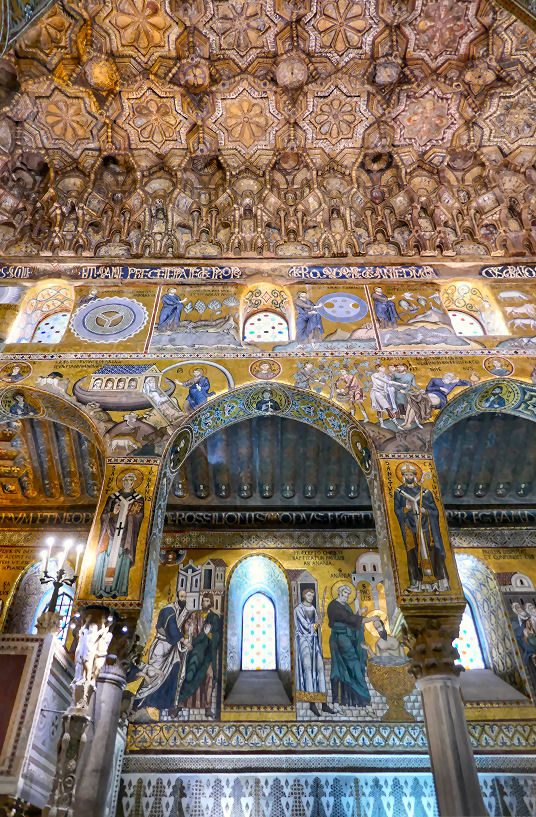
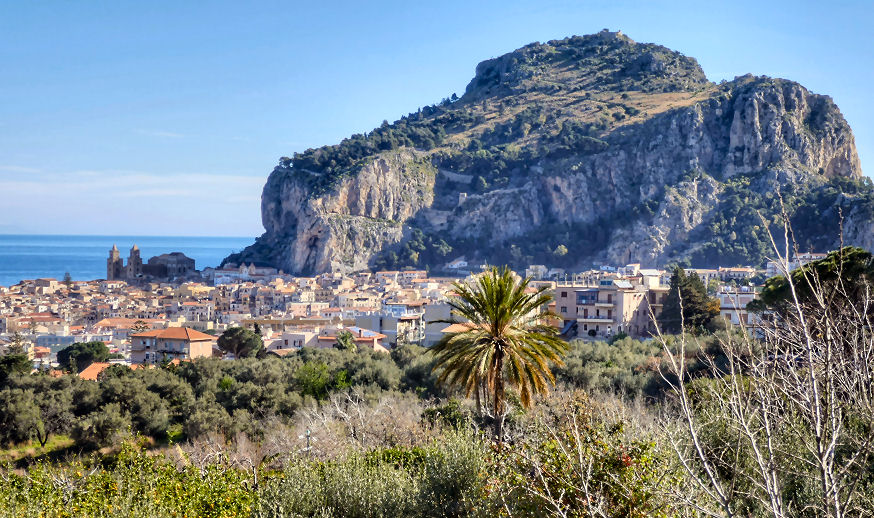
Approaching Cefalu - the Duomo pokes up
to the left.
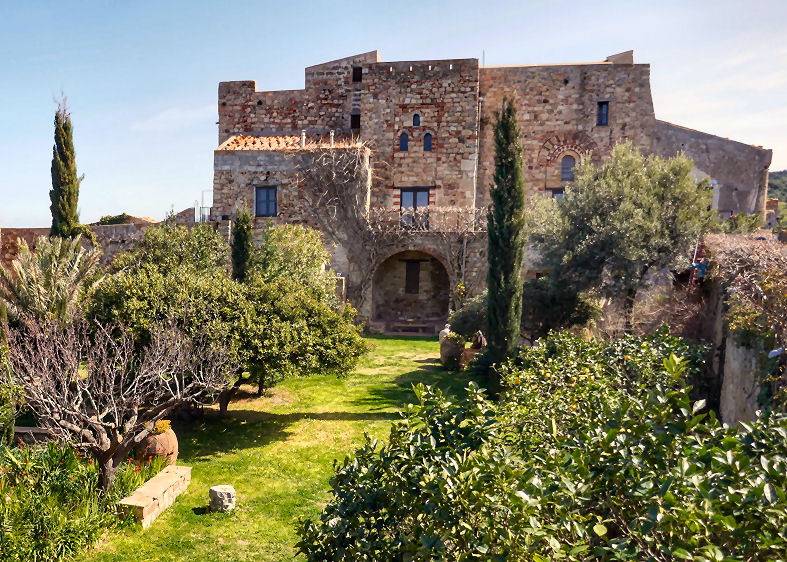
Caronia Castle is above, the Abbey of San Filippo di Fragalà is below.
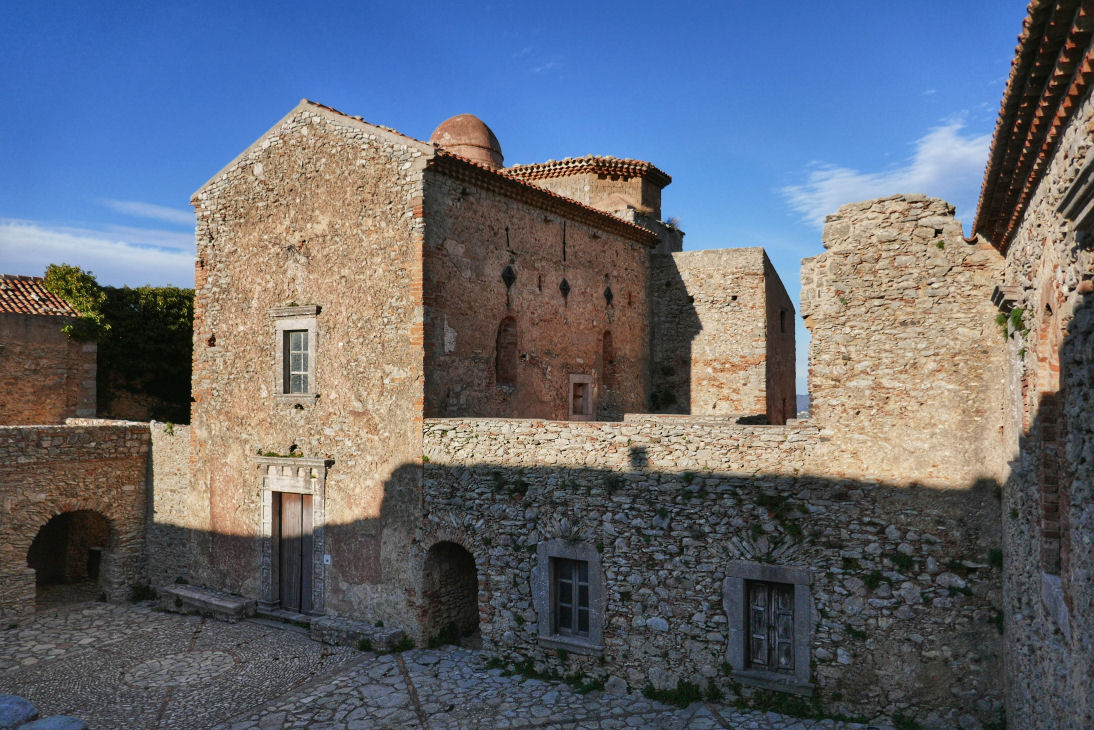
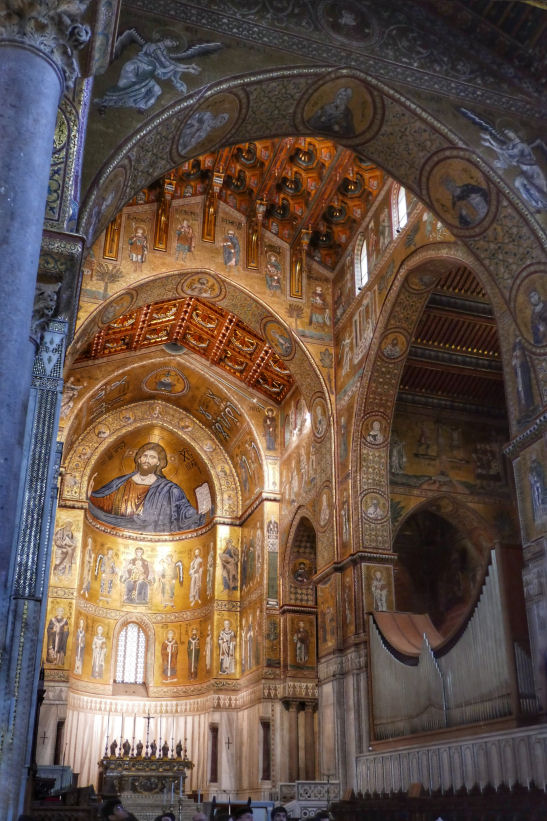
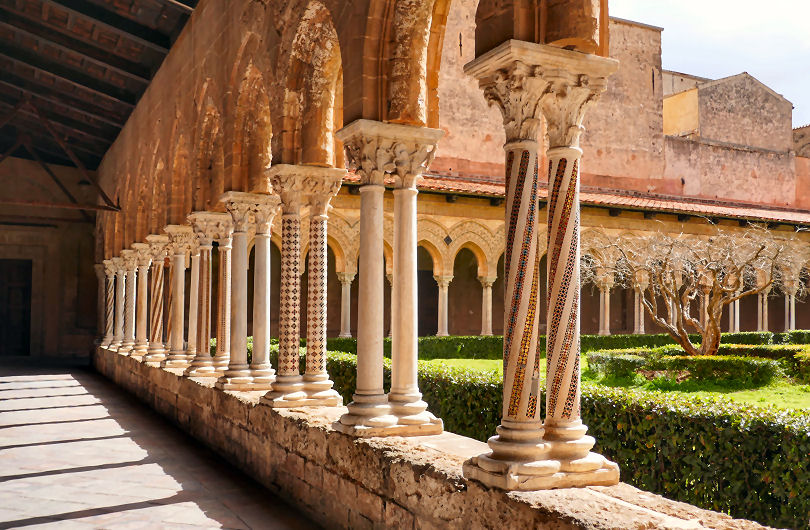
|

